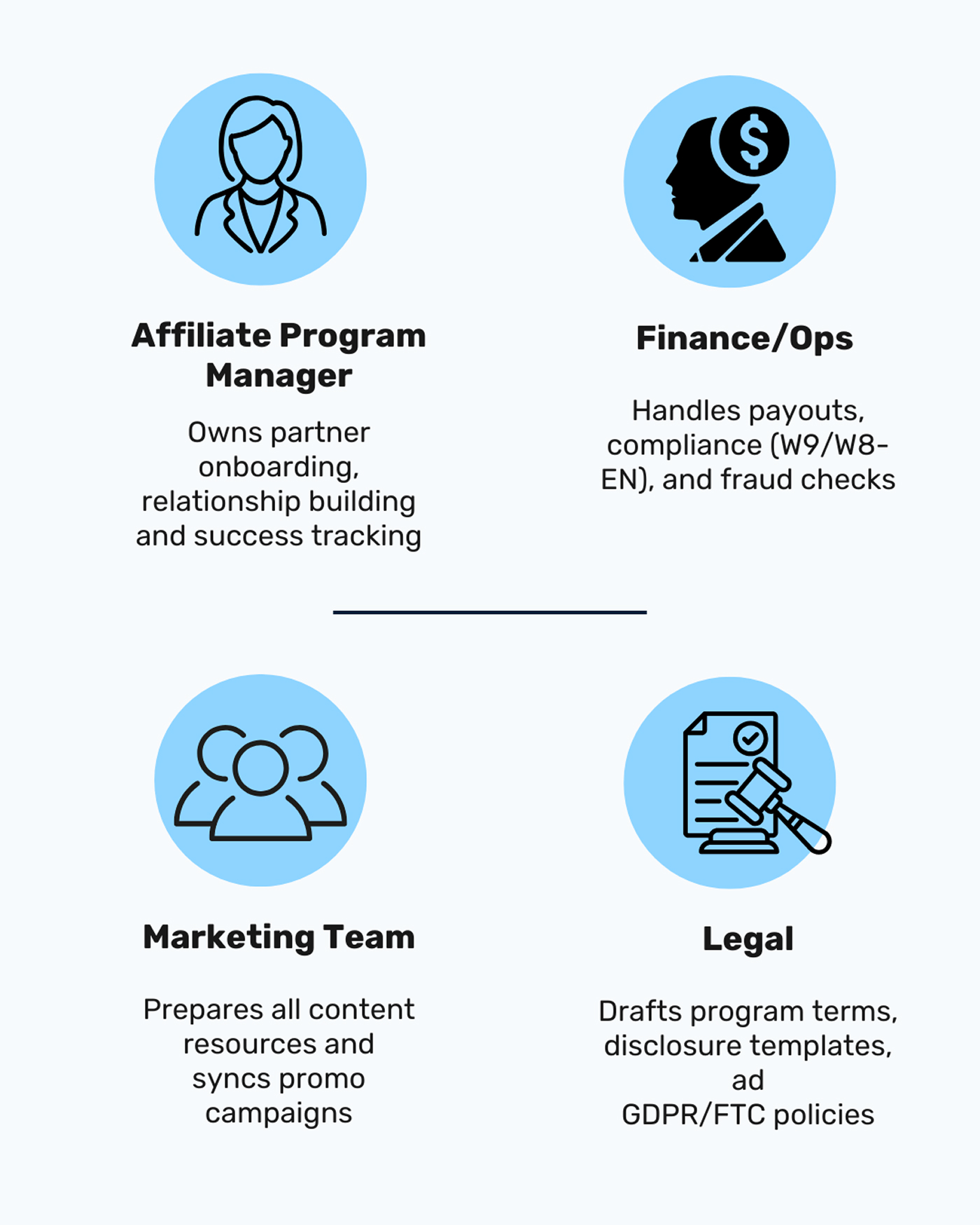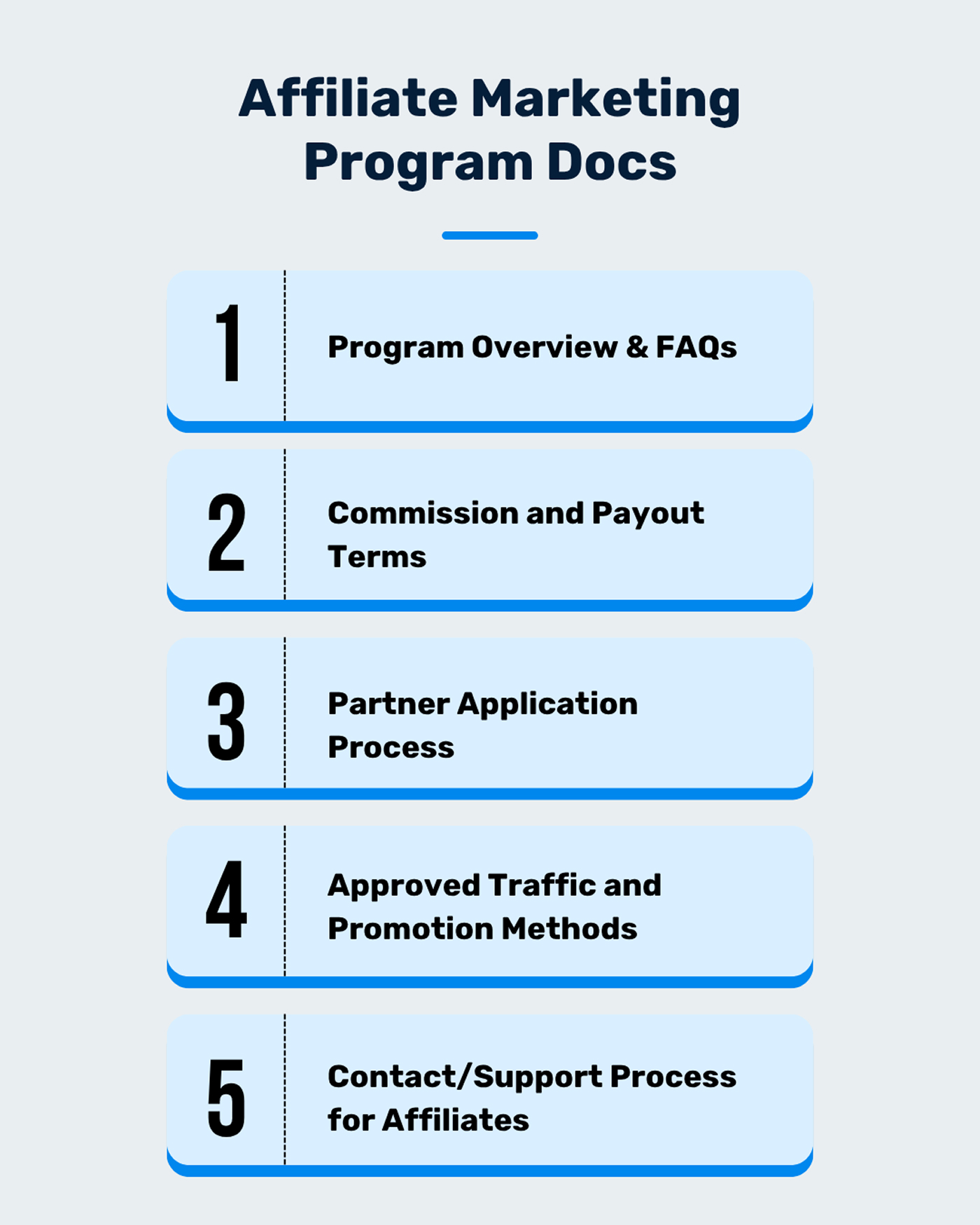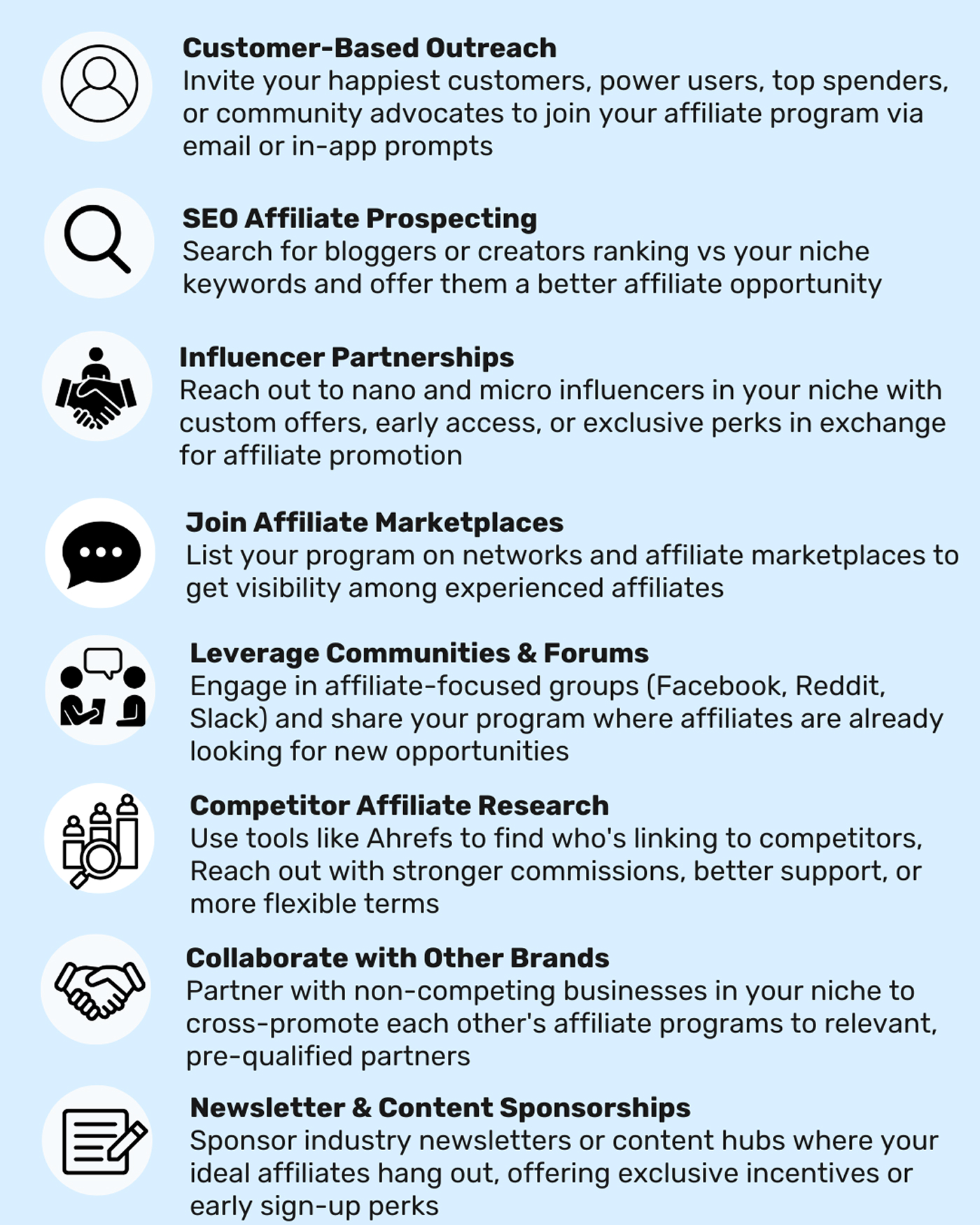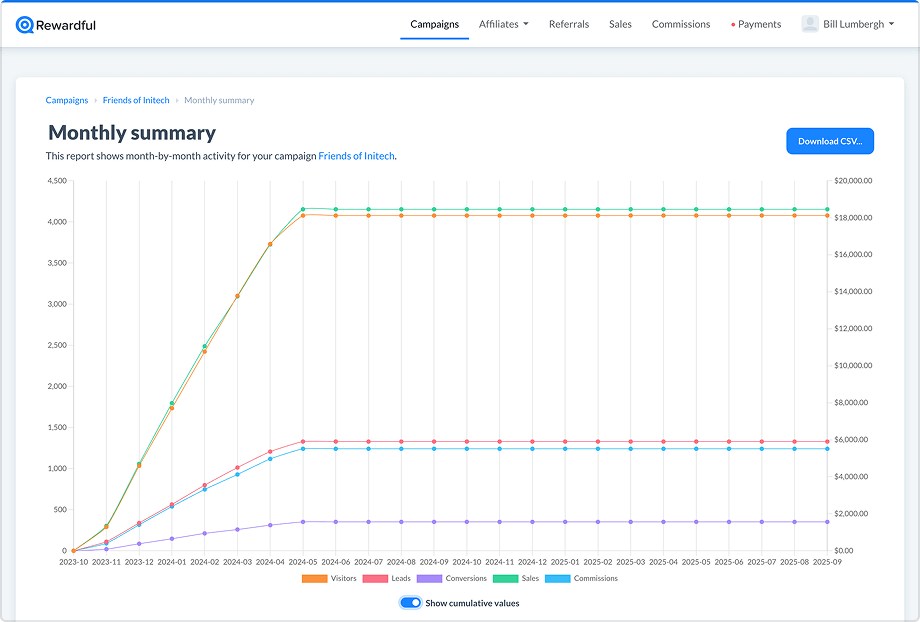If you’re thinking about launching a thriving affiliate program — you’re already halfway to building a revenue engine that runs while you’re sipping matcha, stacking email signups, and finally getting those ROAS numbers to behave.
The other half? Long-term affiliate relationships that don’t ghost you after one promo but stick around, grow with you, and become your ride-or-die affiliate partnerships.
So, how do you actually get there — beyond setting up a quick-share link and praying for traffic? That’s exactly what we’re gonna unpack. In this guide, I’ll walk you through:
- How to onboard affiliates.
- How to keep communication flowing without sounding like a pushy sales rep.
- Tools, terms, and tracking that make your strategy work.
- And the mindset that turns affiliates into true biz allies.
Let’s build a partner roster you’d want in your group chat.
What is an Affiliate Partner?
An affiliate partner is someone who promotes your product or service through their own audience, and gets paid a commission every time they drive a sale, signup, or lead — depending on how your affiliate program is structured.
Affiliates are your external salesforce, your growth allies, your behind-the-scenes whisperers telling the internet, “Hey, this brand? You want in.”
Now, here’s how it plays out in the wild 👇
Let's say you run a project management SaaS. You’ve got a handful of creators in your niche — tech bloggers, YouTubers, even productivity TikTokers — who already talk about team tools. You give them trackable links (UTMs, ref IDs, maybe first-click attribution if you’re fancy), slide them into your affiliate dashboard, and bam — they start driving traffic your way.
They earn when someone signs up through them. You win. They win. Clean.
But it’s not just about sending links and praying to the conversion gods. Managing affiliate relationships means dealing with education flows, email drip sequences, payout schedules, contract clauses, and yes, checking analytics like EPC, CR, AOV, and LTV to see who’s actually moving the needle.
Why Your Business Needs an Affiliate Partner Program
If you're even thinking about launching an affiliate program for your business, you’re already sniffing in the right direction. Let me tell you what we’ve learned from running affiliate programs across SaaS, info products, and ecom (even Shopify stores): when done right, affiliate partners become your most sustainable, relationship-driven, ROI-smart move.
Here’s why your business needs an affiliate program:
- Affiliate marketing drives 16% of global ecommerce sales — but unlike paid search, you only pay when results land.
- Top affiliates often become power users and brand evangelists. The kind who don’t just drop an affiliate link — they build a tutorial series, a course integration, or an evergreen YouTube funnel. We’ve seen it happen with solopreneurs, agencies, even dev teams.
- You get high-quality customer insights — fast. With real-time conversion tracking, you know which partner’s content converts, what funnel brings higher LTV, and whether that blog post with a 3.4% EPC is worth cloning.
- Affiliate partnerships become an extension of your team. We’ve turned affiliates into co-creators, localization pros, and even PR partners. They’ve got reach in markets we hadn’t even considered yet.
Intriguing? Here is where to start 👇
8 Pillars of Affiliate Marketing Partnerships
Before you start dreaming of commission-fueled dashboards and inboxes full of “new sale” alerts, let’s get grounded in what makes affiliate partnerships work long-term. These aren’t just good-to-haves — they’re the 8 core pillars that hold up every high-performing affiliate marketing program.
- Alignment means your top-funnel visibility matches your CRM tagging, your AOV aligns with their strategy, and the messaging feels native.
- Inbox communication. It’s not just about sending links and hoping affiliates remember you. It’s about staying in the partner’s brain (and inbox) with smart, helpful touchpoints. Think: automated onboard emails, monthly updates with new creatives, and little nudges like “hey, your traffic’s up but conversions dipped — want a new CTA to test?”
- Trust. That means clear terms for affiliates, transparent commissions, reliable cookies, and fast-response inboxes.
- Fair rewards. A flat 10% commission? Meh. Think tiered payouts, bonuses during launches, rev share on renewals, and instant payouts for top performers. Make the affiliate partners calendar work for you.
- Reliable tracking. If your pixel breaks or your cookies glitch, affiliates won’t just lose trust — they’ll lose income. You need airtight tracking across devices, clean attribution models, and transparent reporting dashboards. QA every link, test conversions, and spot discrepancies.
- Creative support. Give your affiliates swipe files, mobile-ready visuals, launch promos, and Canva templates they can tweak without asking you for a PSD.
- Compliance saves your a**. If someone’s bidding on your branded keywords or skipping FTC disclosures, it’s on you. Set hard rules, include a disclosure policy, and monitor your affiliates like it’s part of your lifecycle ops.
- Optimization. Pull EPC, AOV, CR — whatever metrics matter — then hand those insights to your content or lifecycle team. Update creatives, test payout models, tweak links. Make it a monthly rhythm, not a Q4 panic.
With such a base, you have everything to start building your programs. And here is the short guide for your start 👇
6 Steps for Building Long-Term Affiliate Relationships
After years in affiliate marketing, my team has a list of secrets to share about relationships with affiliates and influencers. But since we’re in the middle of the big guide, here are the main tips to consider when creating a partnerships program for your company.
Create a suitable affiliate program
Here is the battle-tested base for building a strong background:
1️⃣ Decide the type of your affiliate program: pay per call, lead, click?
2️⃣ Choose a platform that won’t make managing affiliate relationships a full-time panic job. Here is a full guide to assist you.
3️⃣ Commissions. Is it Flat-rate or tiered? Recurring or one-time? Think about your goals. Want affiliates to drive new signups? Reward activations. Want long-term customers? Offer influencers bonus commissions on renewals.
Don’t forget to add crystal-clear rules around cookie windows, traffic sources, and payout timelines — this clarity sets everyone up for success.
4️⃣ Lock down your internal processes and roles. Yes, affiliate program manager isn’t the only person who will make everything work:

- Affiliate Program Manager: Owns partner onboarding, relationship-building, and success tracking
- Finance/Ops: Handles payouts, compliance (W9/W8-EN), and fraud checks
- Marketing Team: Prepares all content resources and syncs promo campaigns
- Legal: Drafts program terms, disclosure templates, and GDPR/FTC policies
And one of the most important tips before you move to the next part is your Core Docs.
Before you open the doors, these docs should be live and ready:

- Program overview & FAQs
- Commission and payout terms
- Partner application process
- Approved traffic and promotion methods
- Contact/support process for affiliates
Recruit potential affiliates
Just slapping a “Join our program” link on your footer? That’s passive energy we don’t do here.
You’ve gotta be intentional. Here are the top methods business uses:

Customer-Based Outreach: Invite your happiest customers—power users, top spenders, and community advocates—to join your affiliate program via email or in-app prompts.
SEO Affiliate Prospecting: Search for bloggers or creators who rank for your niche keywords (e.g., “best X tools,” “[Product] alternatives”) and offer them a compelling affiliate opportunity.
Influencer Partnerships: Reach out to micro- and mid-level influencers in your niche with custom deals, early access, or exclusive bonuses in exchange for affiliate promotion.
Join Affiliate Marketplaces: List your program on networks such as ShareASale, Impact, Awin, or PartnerStack to gain visibility among experienced affiliates.
Leverage Communities & Forums: Engage in affiliate-focused groups (on Facebook, Reddit, Slack, etc.) and share your program where affiliates are already looking for new offers.
Competitor Affiliate Research: Use tools like Ahrefs to discover who’s linking to your competitors, then reach out with stronger commissions, better support, or more flexible terms.
Collaborate with Complementary Brands: Partner with non-competing businesses in your niche to cross-promote each other’s affiliate programs to relevant, pre-qualified partners.
Newsletter & Content Sponsorships: Sponsor industry newsletters or content hubs where your ideal affiliates spend time, offering exclusive incentives or early sign-up perks.
To reach quality affiliates faster, especially those already working with your competitors, tools like phone number finder help you source verified contact info for outreach that actually lands.
Provide onboarding to your affiliates
Start an affiliate marketing program with an automated welcome email that links to their dashboard, outlines how tracking works, and highlights their unique promo links.
Then drop a short, punchy welcome video or Notion doc covering:
- how the program works,
- payout timelines,
- what kind of marketing content performs best,
- and what not to do.
Include answers to common affiliate questions before they even have to ask.
Keep clear communication with affiliate partners
Affiliates need quick, reliable answers — not radio silence. If a tracking link breaks, a payout is missed, or something looks off in their dashboard, your customer support should jump in fast. Set up a system for your team that makes this easy: a dedicated inbox, a priority Zendesk queue, or even a shared Slack channel.
The goal? Don’t make them wait. Because nothing kills affiliate momentum faster than chasing down a broken UTM or an unpaid commission for three days. Support should move as fast as your marketing — maybe even faster.
Provide them with content resources
Give your affiliates the content they need to sell: mobile and desktop visuals, promo banners sized for every platform, swipe copy for email and social media like Facebook or IG, and short-form scripts if you’re working with video creators or influencers.
Bonus points for editable Canva templates for every partner.
Update this affiliate partners hub at least once per quarter.
Measures the effectiveness of their sales
If you’re not tracking what’s working, you’re just handing out links and hoping for the best. Monitor real customer metrics:
- Earnings Per Click,
- Conversion Rate,
- Average Order Value,
- and Lifetime Value tied to each partner.
Especially for influencers and affiliates running traffic through reels, TikTok, or email blasts — you’ve gotta know which content is actually converting, not just driving clicks.
The theory part is over, it’s time for inspiration.
Top 15 affiliate marketing programs examples
These top 15 affiliate marketing programs show how businesses of all sizes are turning affiliates into long-term partners. From killer commission structures to creative assets and relationship-first strategies, these programs prove that when you treat affiliates like true partners, the business results follow.
Let’s break down what makes programs work 👇
Beauty affiliate programs
Sephora cosmetics store affiliate program

Sephora is a great example of a pay per lead program that welcomes affiliates with a slick dashboard: real-time tracking, custom links, banners, and promo codes.
But what I love more is their communication game. They’re sending out regular newsletters with early access to launches, fresh promo angles, and curated content drops, so their customers are always in sync with what’s trending.
Payouts? Classic Net-30 through Rakuten, up to 5% commission, but the cookie window’s tight — just 24 hours.
Mommy Makeup Affiliates

Mommy Makeup affiliate program offers 20% commission with a 90-day cookie. Following the classic approach, they support affiliates with regular emails, product updates, and seasonal content drops.
Credit card affiliate programs
Credit Karma

Partnering via Awin or Impact, affiliates get unique tracking links with a 30-day cookie window and earn about $6 affiliate commissions for each signup. They log into a real-time dashboard showing clicks, conversions, and earnings — they even offer demo access so you can peek before jumping in .
Communication-wise, influencers get email updates about new tools, seasonal campaigns, and platform tips, plus direct support from a dedicated affiliate team.
Creative? Affiliates get access to banners, pre-written copy, and widgets.
Health affiliate programs
Barefut Essential Oils

They pay 20% on first orders and 10% on every refill, so strong affiliate partnerships actually compound over time. You get access to a proper dashboard right after signup — tracking real-time commissions and click-to-sale conversions.
They support you with creative assets and even let you snag a 10% discount on personal purchases. Payouts via PayPal kick in the 3rd or 4th week after month-end — once you hit a $20 threshold.
Puritan’s Pride

Puritan’s Pride gives affiliates up to 4% commission, with a 21–30-day cookie window. Tracking and reporting happen automatically through CJ Affiliate — dashboards update in real-time, so your team isn’t digging through spreadsheets.
They send weekly newsletter drops, fresh product promos, data feeds, and banners for multi-bottle offers plus high AOV products. Plus, they’ve got dedicated affiliates relationships managers on the other end to answer questions and help optimize campaigns.
Cybersecurity affiliate programs
MacKeeper

MacKeeper offers attractive performance-based partnership models, with commissions of up to 55% per sale and 20% on renewals, providing strong long-term revenue potential. Depending on partner potential, MacKeeper is open to exclusive CPA deals, custom payouts, and hybrid models to maximize results.
Affiliates receive full support, including a real-time dashboard for tracking clicks and conversions, personal affiliate manager assistance, custom creatives, and optimization guidance. An earnings calculator on the landing page helps new partners estimate income based on traffic volumes, offering clear insight into earning opportunities right from the start.
Pet affiliate programs
Chewy pet’s food store

Chewy offers a solid 4% commission on all orders and a generous $15 per new customer — paid out through Partnerize with real-time PPC and sales dashboards.
They don’t drop you into the void either. DMs and emails come from an in-house affiliate team, and you get 1:1 affiliates support, regular newsletters packed with new promos, trends, and creative asset updates.
Woof - one of the best dog affiliate programs

When I dove into Woof’s affiliate marketing program, what struck me first was their transparent dashboard via UpPromote/GoAffPro — affiliates can track clicks, and coupon code use 24/7. That clarity cuts down support tickets and builds trust fast.
Communication? Smooth. They reach out via email or even Instagram DMs, approve applications manually, sign contracts digitally, and then pay via PayPal at the end of every month. That personal relationships approach makes every partner feel seen — and seen = engaged.
Travel affiliate programs
Booking hotel rent platform

I love it because here you get access to a full self-serve dashboard packed with tools: hotel search boxes, deep links, responsive banners, and even API access for your dev team if you’re building out custom content.
Their payout model is tiered, starting at 25% of Booking’s commission per sale and increasing as your monthly volume grows. Affiliates payments land via bank transfer, usually on a Net-30 basis.
No fluffy check-ins, but the backend’s solid: live reporting, tracking by link and channel, and full transparency.
Tripadvisor

Tripadvisor offers up to 50% commission on hotel booking revenue — yes, fifty. Affiliates get promo widgets, banners, and API access for dynamic content pulls.
Communication? Automated updates via CJ plus a dedicated support team for partner questions. It’s structured for volume, but optimized for the right partners who love smart, scalable campaigns.
Partnership programs from blogs
This type of marketing is not so popular among content projects. But sometimes, when blog business start offering some service, it launches affiliate programs, like ConvertKit did👇
Kit

The Kit affiliate marketing is what I’d call creator-aligned and conversion-smart. It starts with a clean dashboard via their portal, 30% recurring commissions (yes, recurring), and monthly payouts via Tipalti.
Their affiliate team sends curated updates, launch timelines, and new email templates straight to your inbox. Plus, you get promo kits, branded visuals, and early heads-up on feature drops.
SaaS industry affiliate programs
Notion

Notion potential partners get access to a dashboard via PartnerStack — real-time metrics, custom links, payout tracking, the works.
Comms? Streamlined and supportive: onboarding process flow, email updates, and quick replies from their affiliate team.
They offer up to 50% commission, 90-day cookies, and a polished asset library with banners, templates, and demo content to plug straight into your funnels.
Pipedrive

The Pipedrive affiliate program is a clean, high-converting setup. Partners get a 33% recurring commission for 12 months — yes, recurring — tracked via PartnerStack with a slick dashboard showing clicks, trials, and MRR.
For your success, they provide swipe copy, banners, lead magnets, and even campaign angles, so you’re not left guessing.
To summarize
We just built a full-stack guide to launching an affiliate program that doesn’t just attract affiliates — it keeps them performing like real partners. From setting up your backend ops and recruiting aligned creators to onboarding, tracking, content drops, and relationship-first communication. This is how you turn a basic program into a business-growth engine. No fluff. Just strategies, systems, and affiliate partnerships built to last.














